Bondora returns in July were very similar to a month ago. Most return categories were within 1-2% of previous rates, showing signs of stability across the Bondora platform.
As always, performance charts by country are broken down by number of loan issuances over the given period, with Orange representing <50 loans, Blue 51-200, and White >200.
Yearly Performance
Yearly returns for the most recent three years were within 1% of rates from a month ago. This bodes extremely well for both 2018 and 2019 rates, which are both higher than their target rates. Estonian return rates for the current year actually rose slightly to 20.4%.
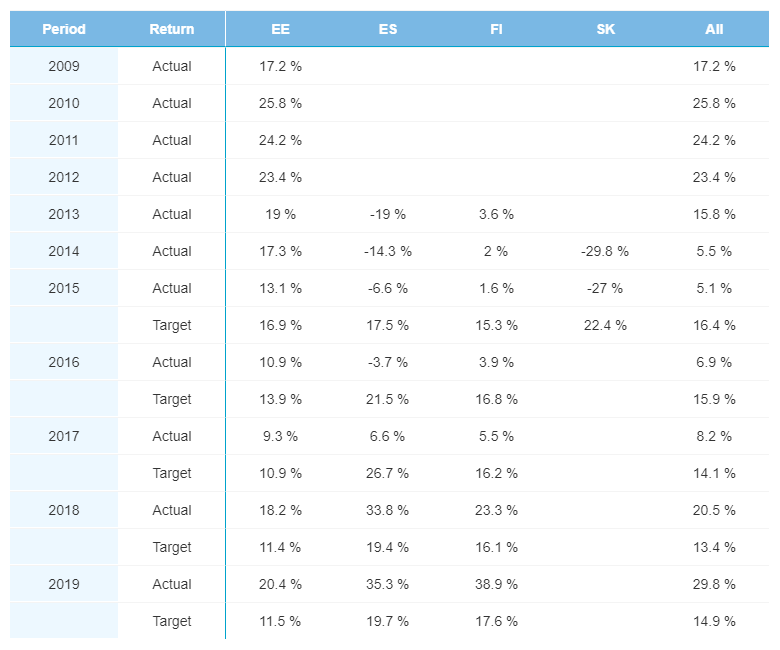
Quarterly Performance
Quarterly returns for the most recent 5 quarters are still higher than their target rates. As expected, the most recent quarter, Q1 2019, has the highest return rate of 29.8%. All quarters prior to 2018 experienced a small shift of less than 1% in their returns.
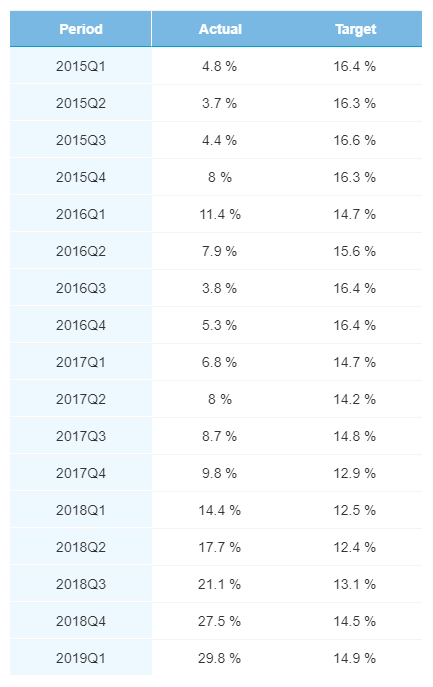
Finland
C, D, and E rated loans out of Finland produced higher rates of return than last month. However, these categories also have the lowest origination counts, making this change less impactful. Returns on HR rated loans in Q1 2019 fell the most, down 2.3% to 40.82%.
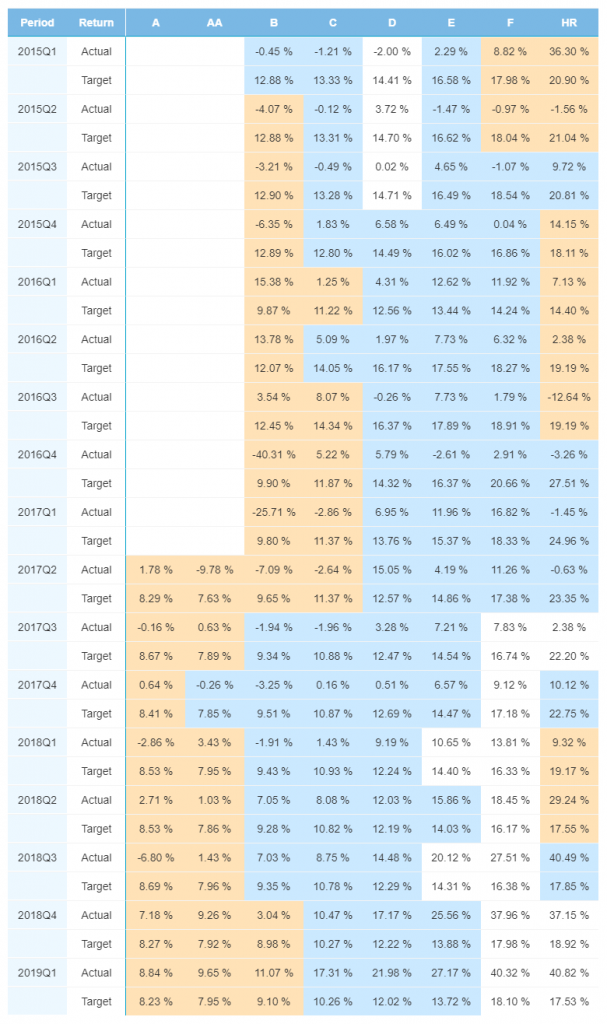
Estonia
Estonian returns were higher in 6 of the 7 rating categories for Q1 2019. The only category which was lower, AA rated loans, were only down slightly by 0.13% to 8.07%, coming directly in-line with their target rate for the quarter.
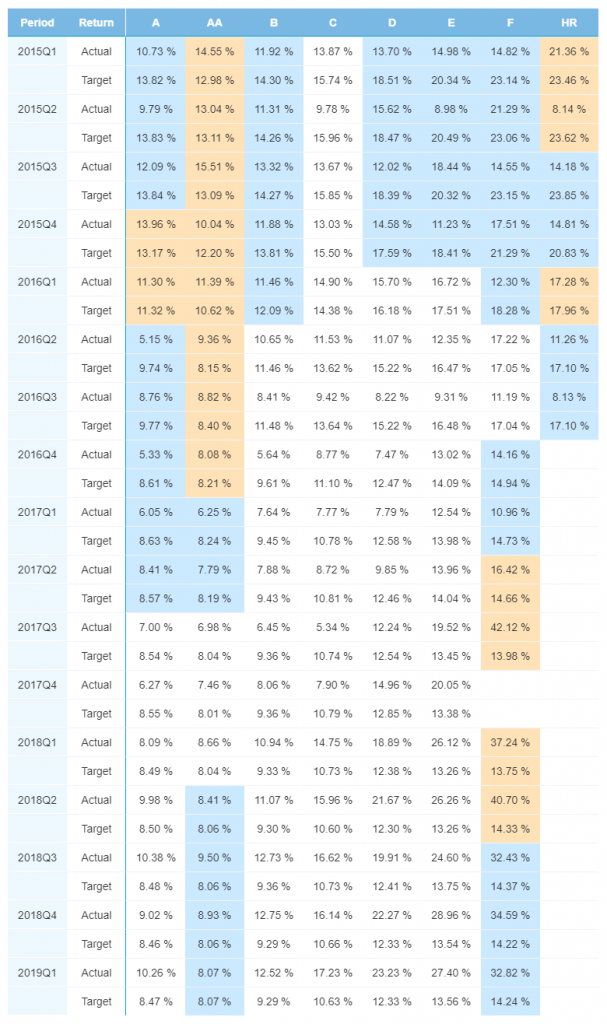
Spain
All three Spanish loan rating categories fell in Q1 2019. While the biggest decline was in HR rated loans, down 2%, rates on these loans are still extremely high, coming in at 61.6% on the month.
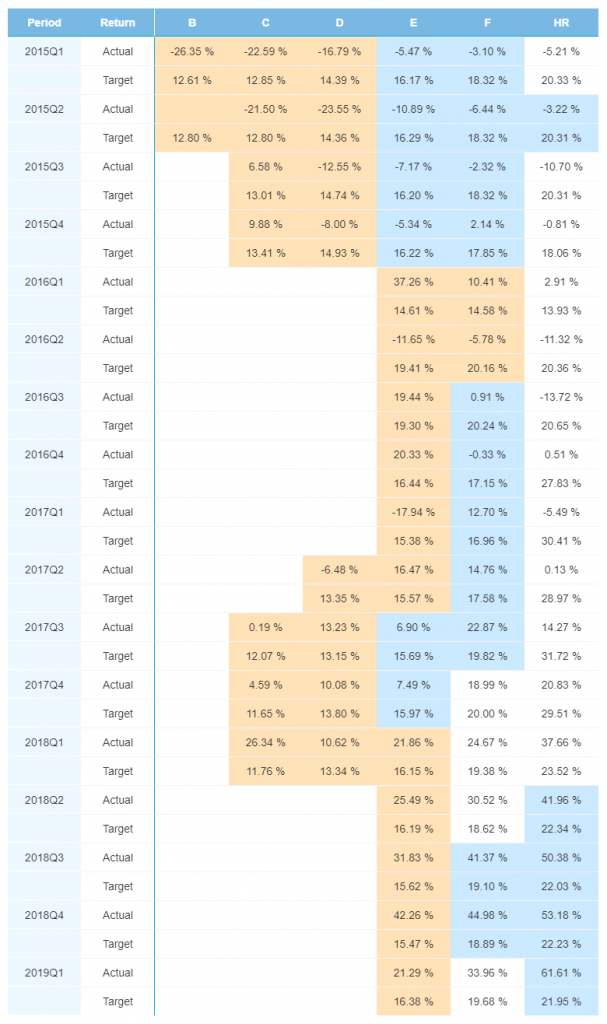
Economic News
European markets are reeling, and in danger of falling into full blown recession. Oil prices fell below $58 per barrel and stock markets across the region, led by the German DAX and French CAC, fell to six-month lows.
Estonian exports were not as strong as hoped in the first half of the year, falling to a growth rate of 4%. It is believed the slowdown was caused by a decrease in shale oil exports from the country. Tõnu Mertsina, chief economist at Swedbank, noted: “While the export growth of goods produced in Estonia weathered the weakened external demand rather well during the first few months of the year, in June it decelerated sharply by one tenth”. The impact was largest in relation to a strong decline in the export of specific shale oil products.
The Finnish labor market came in to question due to statistics which pointed to a demographic with a declining education. According to national statistics, 16% of 20-29 year old Finns have a basic education level. Antti Kauhanen, the chief executive of the Research Institute of the Finnish Economy, sees this as a huge problem for the nation moving forward. “Both expertise and education level are on the decline here…We have to put a stop to this development in order to ensure Finland can continue to grow and maintain the welfare state also in the future.”
It wasn’t so long ago that Spain was in an economic crisis, and as a result, its bond yields were through the roof, exceeding 7%. Fast forward to today and bond yields in Spain are closing in on 0%. The yield on 10-year bonds in Spain fell to a 0.08%. Yet, the Spanish economy still has its issues, such as liabilities coming in at 98% of the country’s output. Spanish yields will be something to watch in the coming months.